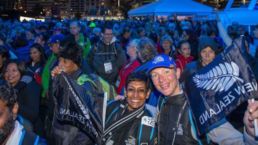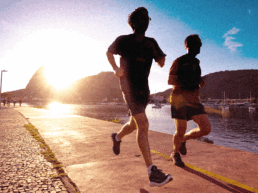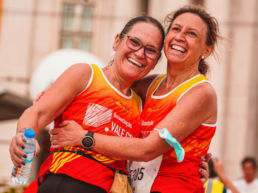How sports event hosts can leverage their audiences
On Sunday 30thApril, the 2017 World Masters Games (WMG) came to a close in Auckland, New Zealand.
From everything we have seen and heard it was a huge success – the games attracted over 28,000 participants from 100+ countries. Massive congratulations to the WMG team.
A key statistic: 31% of participating athletes were from overseas territories (not including neighbouring Australia). That’s 8,680 participants paying their own way – and 8,680 people likely to be spending more time and money exploring New Zealand.
Sports events are great moments around which cities and tourism bodies can create campaigns to engage niche audiences and attract visitors to increase investment. They are the perfect vehicle to engage and leverage domestic and international audiences boosting an area’s economy and its legacy as a successful host.
I won’t be surprised if Auckland surpasses its ambitions for economic impact as a consequence of WMG.
There’s no question sports events drive tourism, but event hosts can leverage their audiences even more effectively by implementing a strategy centred on data-driven content.
WHAT WE MEAN BY DATA-DRIVEN
It’s no longer enough to only produce appealing content. Today’s digital space is so competitive that it’s the organisations who have a deeper understanding of their audiences, and know how to reach them, that get the greatest return.
This is especially true for hosting organisations that want to persuade people to spend their time and money at their sports event, without spending too much of their own in the process.
To achieve this, it’s necessary to identify the niche groups linked to your sport – those most likely to convert into sports tourists. They can be found through analysis of open-source data made available by popular networks such as Facebook and Google; and by the use of specialist software that quickly identify audience demographics and psychographics to drive content and advertising strategy.
EXAMPLE CASE STUDY: TOUR DE YORKSHIRE
The Tour de Yorkshire is a three-stage road cycling race hosted in the UK’s largest county. The 2016 Tour saw over 2 million spectators line the route, boosting the local economy by nearly £60m–20% more than 2015.
Most of the spectators were already based in the UK, and it seems the hosts did a great job because they returned for 2017. But why stop there? To sustain economic impact growth year on year, Tour de Yorkshire may want to look beyond borders to engaging an international audience – if not to watch the event then to persuade cyclists to consider holidaying there in the future, creating a cycling tourism legacy. They have the right idea with this type of content.
The 2016 race was televised in 178 countries and watched by 11.4m global TV viewers – there is an international audience out there. It’s now a matter of putting the right content in front of the right people.
By creating audience personas and establishing the interests relevant to your event, you can uncover those niche audience groups that offer the greatest return.
Here are some high-level potential international audiences we’ve found that Tour de Yorkshire may well be trying to engage:
STAGE 1 INSIGHTS
Interests: Cycling
Audience size: 54,000,000
Sex:![]() 60% | 40%
60% | 40%![]()
Age: 18-24 (30%) | 25-34 (30%) | 35-44 (19%) | 45-54 (12%) | 55+ (9%)
Location: ![]() 7.7m |
7.7m | ![]() 6.7m |
6.7m | ![]() 4.9m |
4.9m | ![]() 2.5m |
2.5m | ![]() 5.1m |
5.1m | ![]() 4.9m |
4.9m | ![]() 1.4m
1.4m
STAGE 2 INSIGHTS
Interests: Road Cycling, Travelling
Audience size: 26,000,000
Sex:![]() 52% | 48%
52% | 48%![]()
Age: 18-24 (38%) | 25-34 (30%) | 35-44 (17%) | 45-54 (10%) | 55+ (5%)
Location: ![]() 3.2m |
3.2m | ![]() 4.1m |
4.1m | ![]() 2.6m |
2.6m | ![]() 1.1m |
1.1m | ![]() 2.2m |
2.2m | ![]() 2.6m |
2.6m | ![]() 0.7m
0.7m
STAGE 3 INSIGHTS
Interests: Road Cycling, Travelling, Team Sky
Audience size: 4,400,000
Sex:![]() 50% | 50%
50% | 50%![]()
Age: 18-24 (42%) | 25-34 (38%) | 35-44 (18%) | 45-54 (2%)
Location: ![]() 740k |
740k | ![]() 420k |
420k | ![]() 550k |
550k | ![]() 170k |
170k | ![]() 390k |
390k | ![]() 300k |
300k | ![]() 110k
110k
An interest in cycling is the most obvious pre-requisite for a Tour de Yorkshire audience, but targeting an audience interested in road cycling and travelling may deliver better conversion, especially if we want them to, well, travel. Further still, Tour de Yorkshire may have more luck in engaging hard-core fans in our STAGE 3 insights – perhaps those interested in professional road cycling teams like Team Sky.
Exploring different avenues that uncover deeper audience interests, like Team Sky, creates opportunities for hosts to utilise relevant influencers in their campaigns, create content with or around them, and target that audience group with a creative advertising campaign.
DOES IT WORK?
I believe so. In 2015 REDTORCH were fortunate to work with the 2017 World Masters Games Organising Committee (Auckland). Our remit was to engage a specific international audience of Masters athletes from 9 sports in 9 northern hemisphere territories. Our strategy included developing deep insights into these audiences, on appropriate platforms, and targeting them with content specific to their interests.
We were a small piece of the puzzle and are proud to have contributed.
Results:
- 31% of participating athletes were from overseas territories
- 239% increase in traffic to sport-specific pages on website
- 162% increase in traffic to content created by REDTORCH
- 98% increase in traffic from people living in the northern hemisphere
FINAL WORDS
Data insights identify niche audience groups that event hosts can engage via cost-effective digital strategies. By targeting these groups with relevant content, event hosts can generate significant economic impact for relatively little investment.
It’s no longer enough to produce good, generic content. To get the best value for money, adopt a data-driven approach to unlock the potential of your audiences.





